
The Mayan Bee Sanctuary was born in January 2019 and it is divided in two main components: the Melipona Bee and Mayan Sculptures. The first aims to teach the importance the Melipona Bees have had in the environment, traditions and culture as well as creating awareness. Beekeeping is a very important activity, by means of which we have the privilege of sharing a Mayan tradition to the world. The Sanctuary helps individuals visualize beekeeping within a rational and sustainable context of environmental resources. Our goal is to create mindfulness towards the conservation of this species. The second component encompass the diversity of artistic expressions that constitute a valuable asset to the Mayan culture. Each piece shows us in a very singular way, as the sculptor gives life to something inert in order to preserve the Mayan culture. These sculptures evoke a rather mystical sense and knowledge of the culture as they are displayed throughout the site.
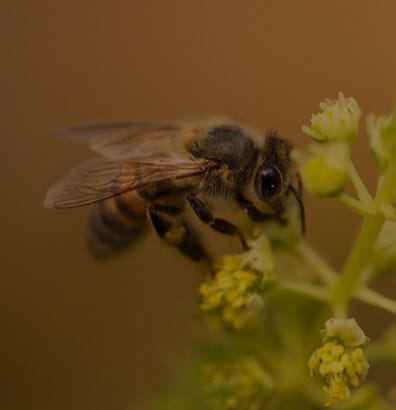

The stingless bees, also known as Meliponas or “Xunan Cab” in Maya language, are native of Yucatan and have reproduced in endemic areas where the ancient Maya inhabited, such as the region of what is today southern Mexico, lowland Guatemala, and central Belize.
Xunan Cab, “the royal lady” holds a very important place in the religion, cosmogony, commerce, food and medicine for the ancestral and current Mayan people. Such is the importance of the bees that the Maya, developed colorful rituals to define and celebrate their complex relationship and honor Ah Mucen Kab; the deity associated with the care of the bees. There are over 600 different species of stingless bees over the world, 46 different types in Mexico, and 16 different species of Melipona in the Yucatan Peninsula. They are considered to be self-sufficient, which means they can thrive once provided with their basic needs such as shelter, pollen, nectar and water. The main characteristic of the Melipona bee is that it does not have a stinger, but “bites” to defend its colony from everything that represents a threat. They require more care than a traditional hive, as they are highly sensitive to abrupt changes in climate and noise and may only live up to 40 days. Meliponas perform 80% of the pollination of forests in the Yucatan Peninsula.
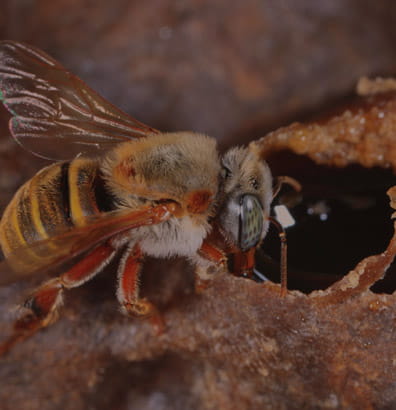

According to tradition, the meliponicultor must be a noble person, without discord that protects the melipona jobones and carry out rituals of gratitude and prayer to the four “Bacabes”, founding gods of the Mayan apiculture and protectors of the melipona bee. Both the production process and the use of honey have ancestral symbolisms that live today in new generations of Maya meliponiculturists. The “jobon”, a hollow trunk in which melipona hives develop their honey, contains in its physical structure symbolisms that allude to the sky, the earth and the Maya underworld.
The meliponarios must be cared for with affection and respect for an optimal production of honey. Each jobón, when productive, gives between one or two liters of honey year, and the collection of honey, likewise, is done once or twice a year, in a very meticulous and traditional way, so as not to harm the bees, the honey is extracted with special syringes through one of the holes in the jobon. Its production process is slower compared to that of the European or African bees that produce up to 30 liters of honey in a year.
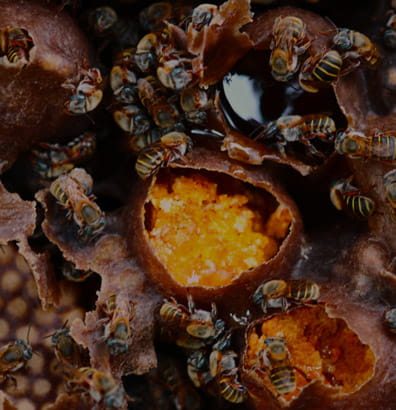

The Melipona bee has been here since pre-Hispanic times, with ancestral and religious curative traits, and considered a food of the sun, creator and regenerator. Although honey production is lower, it is much more beneficial than honey of other bees since their medicinal properties help the immune system as well as being used to cure ailments, wounds, burns and diseases. In the Cosmetic branch it is also much appreciated, because it is used to create products like soaps and lotions.
Melipona Becheeii feed mainly on flowers as diverse as the Dzidzilché, the Tajonal, and the Tzalam, all with great aroma, white in color, and blooming at a certain time of the year. This is what gives the Melipona honey its special characteristics: lighter color, liquid with a sweet and sour taste. The pollen of melipona bees has a protein value 50 % greater than that of rest of the bees. According to the Maya, it has the healing power to restore the well-being (hun ol) and harmony of the heart to which the Maya assigned his vigor and strength (kinam). Since ancestral times they had used it as medicine and sacred for rituals and ceremonies.
This honey has many properties that stimulates the well-being of immune system and heals a lot of diseases and injuries such as:
- Relieves disorders in the digestive system
- Problems in the circulatory system
- Ideal for the respiratory system (especially if you have a cough or sore throat)
- Low immune system
- Calming fevers
- For stings and snake bites
- Eye diseases, especially cataracts
- For healing wounds or sores
- Stains on the skin
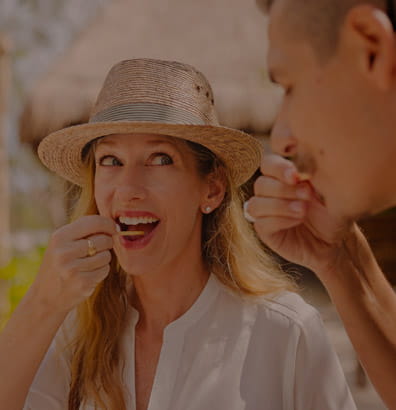

Honey is a sweet and viscous fluid produced by honeybees and other insects from the nectar of flowers. Depending on its nectar source, honey can be floral, fruity, smoky, woody, spicy, nutty or earthy. It can smell fresh as grass or pungent like aged cheese. It can look nearly clear as water or dark as molasses. These characteristics vary based on what plants the hive’s bees have been collecting nectar from, geography and weather.
Granulation or crystallization of honey is a natural process and does not affect the quality of honey. Some floral varietals have a tendency to granulate more quickly than others and cold temperature also speeds up the rate of crystallization. In warmer climates, honey remains runny much longer.







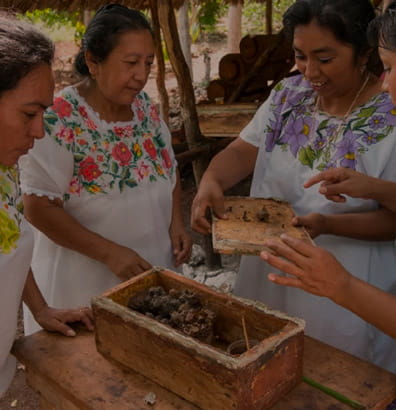

Our quest is to create consciousness and call upon humanity to collaborate in the preservation and repopulation of the Melipona Bee, especially in the Mayan communities.
The massive jungle devastation and the industrial agricultural practices have endangered the Melipona Bee. The tradition of beekeeping in modern Mayan communities has progressively been dying out, therefore we work closely with Mayan communities in an effort to bring this tradition back and help as many communities to share love for nature, Mayan culture, agroecology and meliponuculture as we can. All our products come from these Mayan communities, as we seek to show the importance of meliponicultre, accomplish thriving communities of bees and protect traditions linked to our ancestors as regular income is generated for these communities. Currently, melipona honey from the Becheii species is being worked by 38 producers with the support of the U Yits Ka’an School of Organic Agriculture in the municipalities of Maní, Yaxcaba and Mama, in Yucatán and other communites.